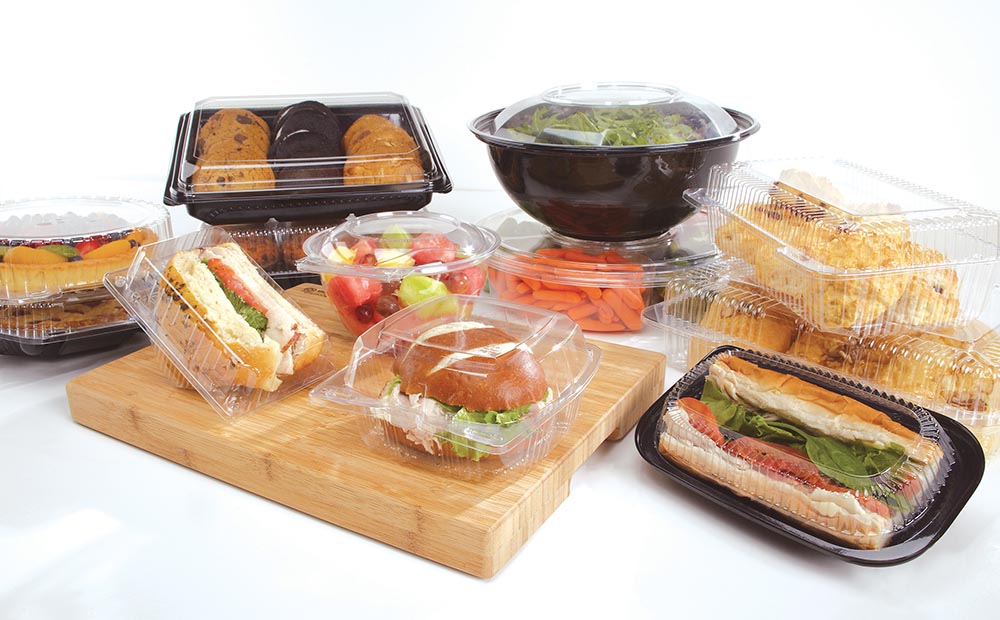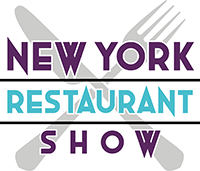As drop-off catering grows, so does the need for reliable packaging and single-use items—which are becoming more attractive and eco-friendly
By Lynn Dyer, president of the Foodservice Packaging Institute
Catering has expanded over the years. In the past, independent caterers would bring in their prepared foods and beverages, served on reusable china along with flatware and glasses. Then, they’d clean up and bring everything back to the shop. Today, traditional caterers are joined by a growing number of large foodservice chains providing off-site catering options to drive additional sales. This model differs in that the prepared foods are often dropped off, along with single-use cups, dinnerware, utensils and other items to serve the guests. In these situations, foodservice packaging plays a critical role in successful catering.
Whether food is being delivered in large quantities or in individual portions, the packaging must be sturdy and durable so the items arrive at their destination as intended—and without sacrificing the quality customers expect. Packaging needs to protect the food during transport from damage, leaks, spills and temperature changes. As delivery grows, so does the need for tamper-evident packaging.
And, while function often trumps form, the design of the serviceware, platters and other packaging can match the overall look of the event. For example, there are now paper and plastic glasses, dinnerware, cutlery and napkins that have the look and feel of their reusable counterparts, but with all the convenience of single-use items. For a more grab-and-go, less formal off-premise catered event, the packaging can promote the provider’s brand (especially important when the customer isn’t interacting directly with the provider).

With the increased use of single-use items to grow the catering market, questions may arise about the environmental impact of using these items. The truth is all products—whether a reusable ceramic plate, a cloth napkin or a single-use cup—have an environmental footprint. Reusable items require resources like water, chemicals and electricity to wash and dry them. Single-use items don’t require washing, but there may be concerns about the resources used to make them—especially if the items ultimately end up in the trash after use by the customer.
Caterers aren’t the only audience expressing concerns about single-use packaging. In the Foodservice Packaging Institute’s 2019 State of the Industry report, respondents said that the top challenge facing the industry is the public perception of foodservice packaging as waste. Recovery or end-of-life options for these single-use items, along with environmental activism, also appeared in the top five common challenges facing the industry. This further emphasizes the need for foodservice packaging to have less of an environmental impact.

Tips for Greener Events
There are some actions that caterers can take to mitigate environmental concerns:
1. Consider what’s really needed to supply the event—no need to oversupply and create unwanted waste.
2. Consider the materials used to make these single-use items. Look for items made from renewable (i.e., plant-based) materials or items made with recycled materials.
3. Consider what customers can do with the items once they are used. Many disposable items are intended to be reused.
4. Do a little homework to understand whether the event venue offers recycling or composting. Even if recycling or composting options aren’t available, sending the items to landfills is certainly preferable to letting them escape on land or in waterways. Providing proper receptacles to collect the used packaging is imperative, whether they are supplied by the caterer or the customer.
Just as catering has changed, so has the foodservice packaging industry. Over the last 100-plus years, the industry has adapted to the needs of its customers and consumers alike. Innovations will continue to come to market to support the changing needs of caterers and other foodservice operators, providing superior performance and lower environmental impact. To stay abreast of these developments, caterers may join FPI for free by emailing [email protected], and can access many free resources at fpi.org.













